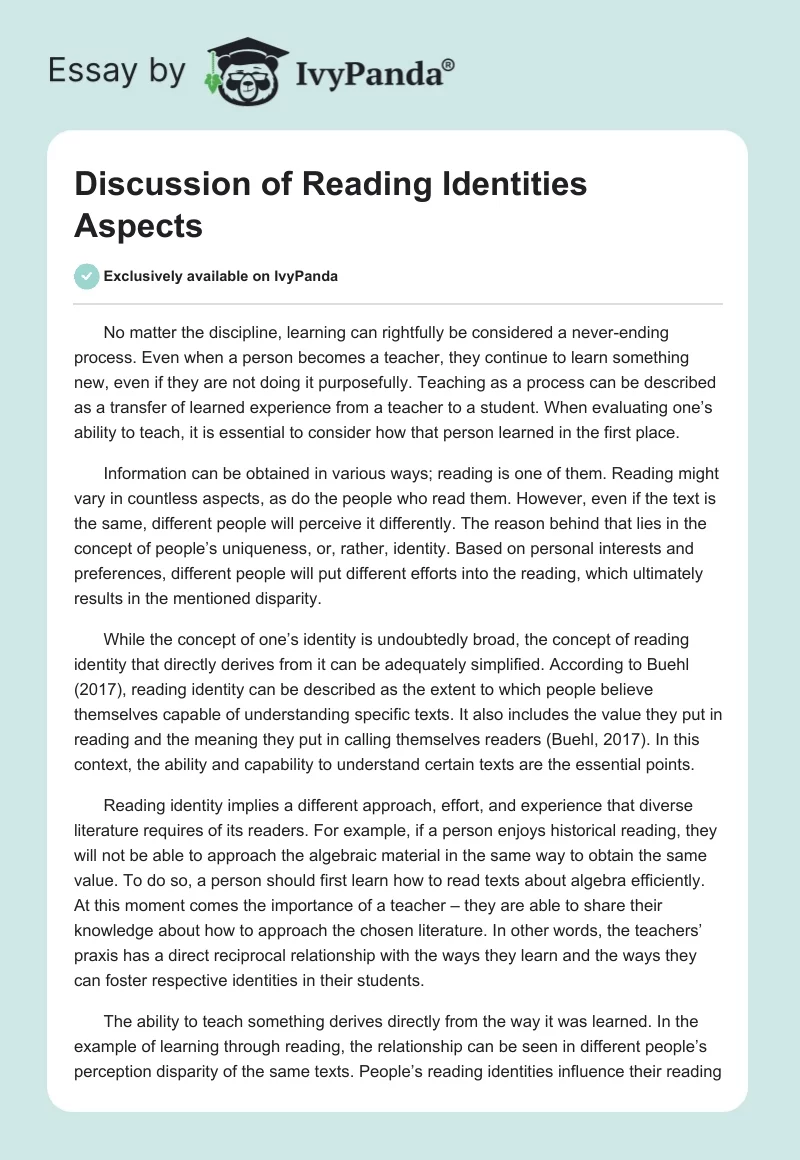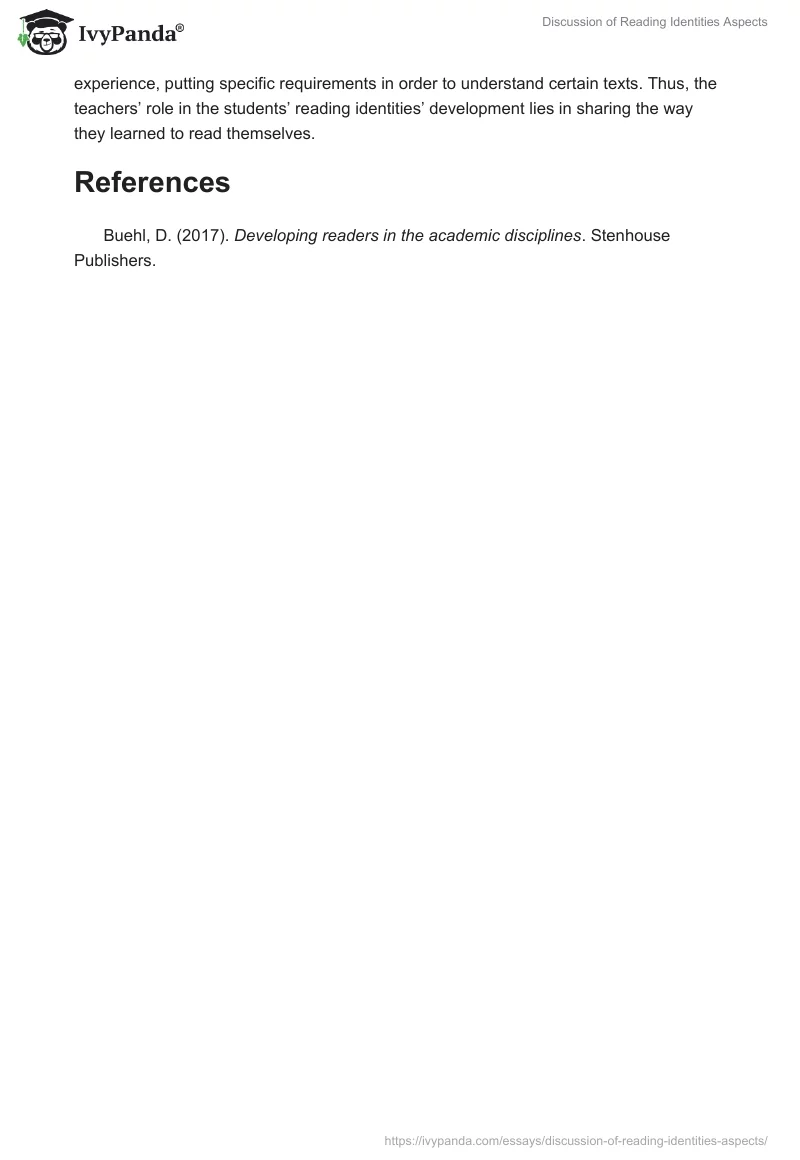No matter the discipline, learning can rightfully be considered a never-ending process. Even when a person becomes a teacher, they continue to learn something new, even if they are not doing it purposefully. Teaching as a process can be described as a transfer of learned experience from a teacher to a student. When evaluating one’s ability to teach, it is essential to consider how that person learned in the first place.
Information can be obtained in various ways; reading is one of them. Reading might vary in countless aspects, as do the people who read them. However, even if the text is the same, different people will perceive it differently. The reason behind that lies in the concept of people’s uniqueness, or, rather, identity. Based on personal interests and preferences, different people will put different efforts into the reading, which ultimately results in the mentioned disparity.
While the concept of one’s identity is undoubtedly broad, the concept of reading identity that directly derives from it can be adequately simplified. According to Buehl (2017), reading identity can be described as the extent to which people believe themselves capable of understanding specific texts. It also includes the value they put in reading and the meaning they put in calling themselves readers (Buehl, 2017). In this context, the ability and capability to understand certain texts are the essential points.
Reading identity implies a different approach, effort, and experience that diverse literature requires of its readers. For example, if a person enjoys historical reading, they will not be able to approach the algebraic material in the same way to obtain the same value. To do so, a person should first learn how to read texts about algebra efficiently. At this moment comes the importance of a teacher – they are able to share their knowledge about how to approach the chosen literature. In other words, the teachers’ praxis has a direct reciprocal relationship with the ways they learn and the ways they can foster respective identities in their students.
The ability to teach something derives directly from the way it was learned. In the example of learning through reading, the relationship can be seen in different people’s perception disparity of the same texts. People’s reading identities influence their reading experience, putting specific requirements in order to understand certain texts. Thus, the teachers’ role in the students’ reading identities’ development lies in sharing the way they learned to read themselves.
References
Buehl, D. (2017). Developing readers in the academic disciplines. Stenhouse Publishers.


